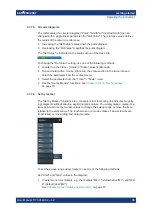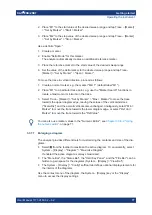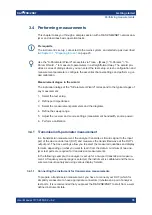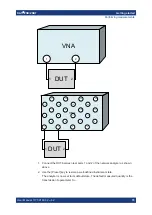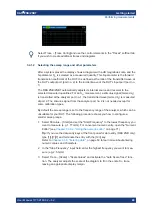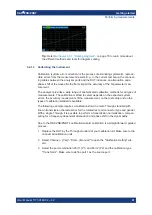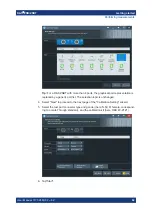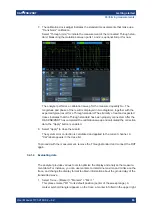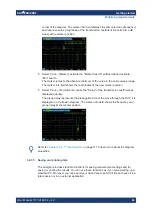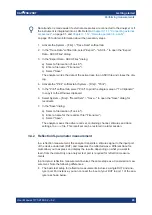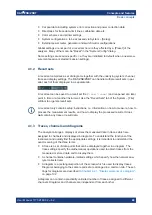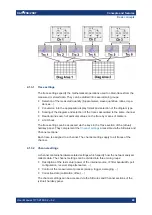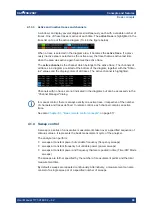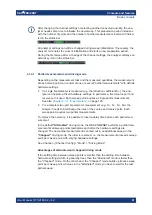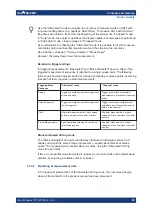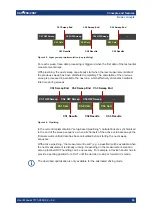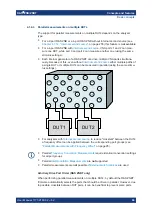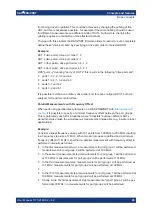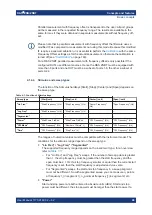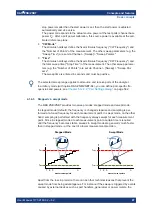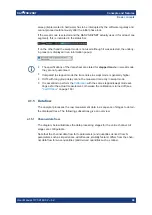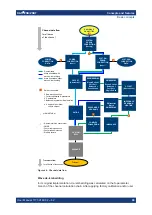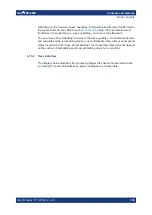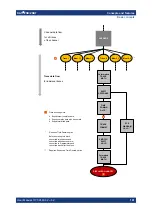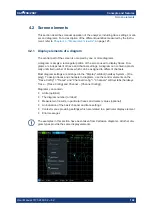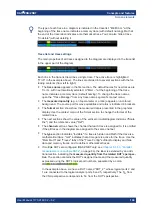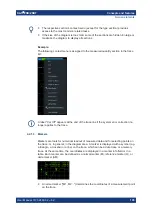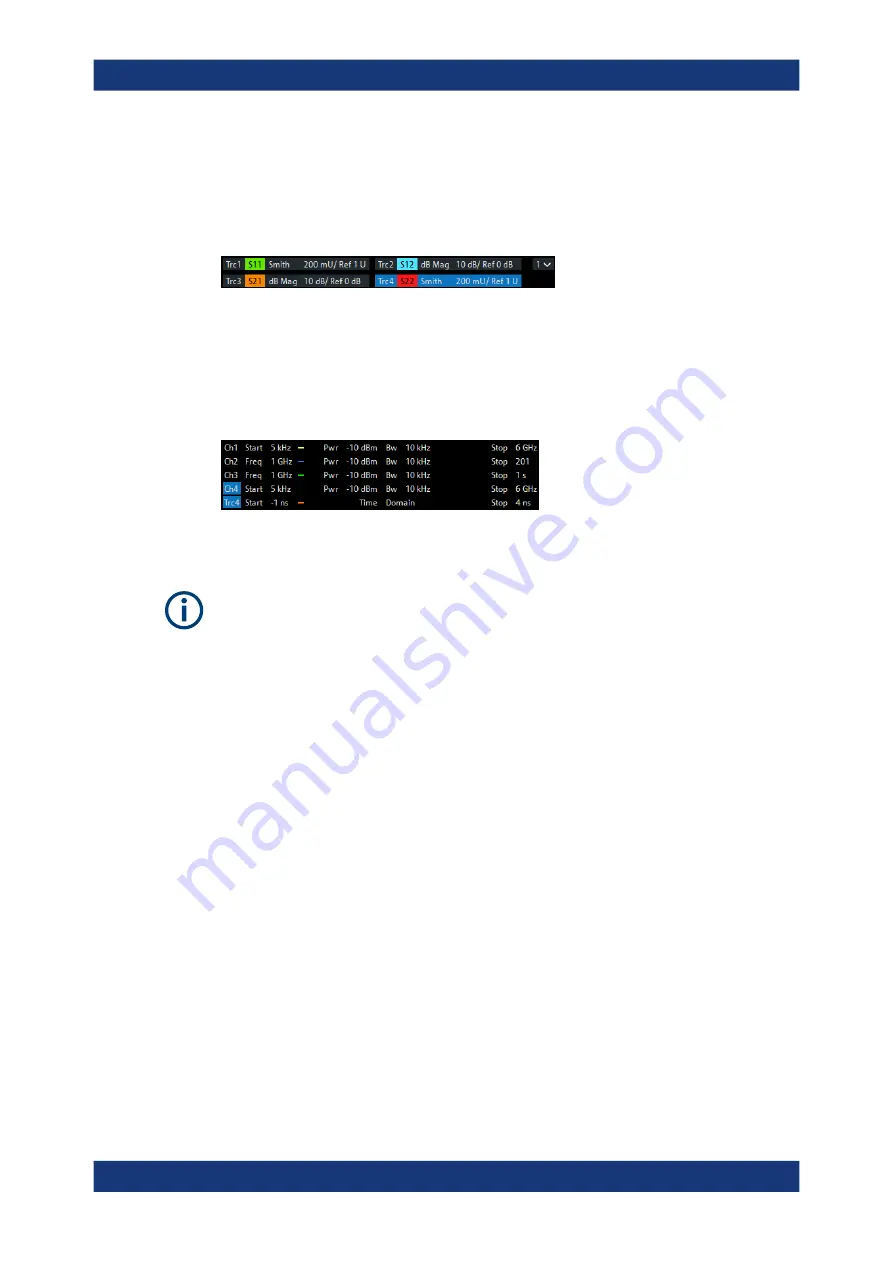
Concepts and features
R&S
®
ZNB/ZNBT
90
User Manual 1173.9163.02 ─ 62
4.1.3.3
Active and inactive traces and channels
A window can display several diagrams simultaneously, each with a variable number of
traces. One of these traces is active at each time. The
active trace
is highlighted in the
trace list on top of the active diagram (Trc4 in the figure below):
When a trace is selected in the diagram area, it becomes the
active trace
. If a previ-
ously inactive area is selected as the active area, the trace that was active last time
when the area was active again becomes the active trace.
The
active channel
is the channel which belongs to the active trace. The channels of
all traces in a diagram are listed at the bottom of the diagram, together with the "Stimu-
lus" values and the display colors of all traces. The active channel is highlighted.
Channels with no traces are not indicated in the diagrams but can be accessed via the
"Channel Manager" dialog.
In manual control, there is always exactly one active trace, irrespective of the number
of channels and traces defined. In remote control, each channel contains an active
trace.
See also
Chapter 6.3, "Basic remote control concepts"
4.1.4
Sweep control
A sweep is a series of consecutive measurements taken over a specified sequence of
stimulus values. It represents the basic measurement cycle of the analyzer.
The analyzer can perform:
●
sweeps at constant power but variable frequency (frequency sweeps)
●
sweeps at constant frequency but variable power (power sweeps)
●
sweeps at constant power and frequency that are repeated in time (Time/CW Mode
sweeps)
The sweeps are further specified by the number of measurement points and the total
measurement time.
By default, sweeps are repeated continuously. Alternatively, a measurement can also
consist of a single sweep or of a specified number of sweeps.
Basic concepts

